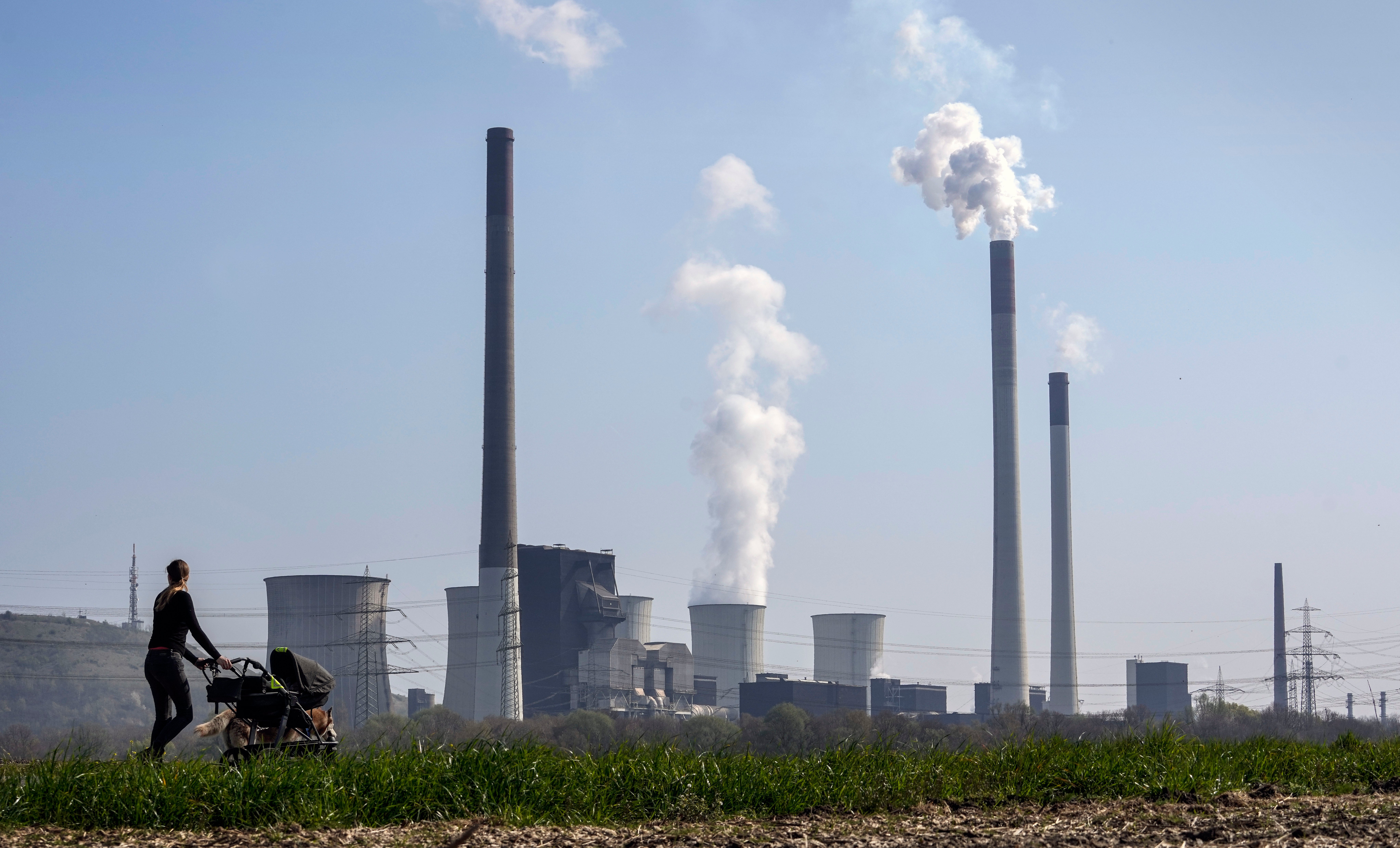UN report: Climate pollution reductions 'highly inadequate'
A new UN report shows that countries aren't doing enough to cut emissions of heat trapping gases

Your support helps us to tell the story
From reproductive rights to climate change to Big Tech, The Independent is on the ground when the story is developing. Whether it's investigating the financials of Elon Musk's pro-Trump PAC or producing our latest documentary, 'The A Word', which shines a light on the American women fighting for reproductive rights, we know how important it is to parse out the facts from the messaging.
At such a critical moment in US history, we need reporters on the ground. Your donation allows us to keep sending journalists to speak to both sides of the story.
The Independent is trusted by Americans across the entire political spectrum. And unlike many other quality news outlets, we choose not to lock Americans out of our reporting and analysis with paywalls. We believe quality journalism should be available to everyone, paid for by those who can afford it.
Your support makes all the difference.The world, especially richer carbon polluting nations, remains “far behind” and is not doing nearly enough -- not even promising to do enough -- to reach any of the global goals limiting future warming, a United Nations report said.
That “highly inadequate” inaction means the window is closing, but not quite shut yet, on efforts to keep future warming to just a few more tenths of a degree from now, according to Thursday’s Emissions Gap report from the United Nations Environment Programme.
“Global and national climate commitments are falling pitifully short,” United Nations Secretary-General Antonio Guterres said Thursday. “We are headed for a global catastrophe.”
The world is weaning itself from fossil fuels too slowly, the report and experts said.
“The report confirms the utterly glacial pace of climate action, despite the looming precipice of climate tipping points we’re approaching,” said climate scientist Bill Hare, head of Climate Analytics that also examines what countries are promising and doing about carbon emissions in its own analysis.
Instead of limiting warming to 1.5 or 2 degrees Celsius (2.7 degrees or 3.6 degrees Fahrenheit) above pre-industrial levels, the global goals set by 2015 Paris agreement, the way the world is acting now, warming will hit 2.8 degrees (5 degrees Fahrenheit) by the year 2100, the UN report said. Countries concrete pledges would bring that down to 2.6 degrees (4.7 degrees Fahrenheit). It’s already warmed 1.1 degrees (2 degrees Fahrenheit) since pre-industrial times.
“In all likelihood we will pass by 1.5,” UNEP Executive Director Inger Andersen told The Associated Press in an interview. She didn't say when she thinks that would happen. “We can still do it, but that means 45% emissions reductions” by 2030.
“It’s really about understanding that every little digit (tenth of a degree of warming) that we shave off is a lesser catastrophic outlook,” Andersen said.
The emissions gap is the difference between the amount of carbon pollution being spewed between now and 2030 and the lower levels needed to keep warming to 1.5 or 2 degrees.
Guterres said “the emissions gap is a by-product of a commitments gap. A promises gap. An action gap.”
Stanford University climate scientist Rob Jackson, who chairs the independent Global Carbon Project that tracks carbon dioxide emissions around the world but wasn’t part of the UN report, said “another decade of fossil emissions at current rates and we’ll zip past 1.5C.... The way things are going though we’ll zip past 1.5C, past 2C and -- heaven help us -- even 2.5 or 3C.”
“We’re failing by winning too slowly,” Jackson said in an email. “Renewables are booming and cheaper than ever. But COVID stimulus plans and the war in Ukraine have disrupted global energy markets and led some countries (to) revert to coal and other fuels. This can’t continue in a safe climate.”
In 10 days, yearly international climate negotiations will begin in Sharm El Sheikh, Egypt, and in the run up to the United Nations conference, several reports highlight different aspects of the world’s battle to curb climate change. Wednesday, a different UN agency looked at countries’ official emission reduction targets. Thursday’s Emissions Gap report looks at what countries are actually doing as well as what they promise to do in the future in various pledges.
The G20 nations, the richest countries, are responsible for 75% of the heat-trapping pollution, Andersen said, adding “clearly the more those G20s lean in, the better we will be.”
The report said “G20 members are far behind in delivering” on their promises to reduce emissions. Taking out the special cases of Turkey and Russia, current polices by G20 nations fall 2.6 billion metric tons a year short of the 2030 goal, the report said. Both Turkey and Russia's targets for 2030 have higher pollution levels than current policies project and using their projections would make the G20 emissions gap artificially low, the report said.
“It’s critical that China, as well as the U.S. and other G20 countries, actually lead,” Andersen said. She hailed the newly passed $375 billion American climate- and inflation-fighting law as an example of action instead of just promises.
The report said that by 2030 the U.S. law should prevent 1 billion metric tons of carbon emissions, which is much more than other nations efforts made this year.
“What we’re calling for is an accelerated pace because there are good things happening out there in a number of countries, but it’s just not fast enough and it’s not consistent enough,” Andersen said.
___
Follow AP’s climate and environment coverage at https://apnews.com/hub/climate-and-environment
___
Follow Seth Borenstein on Twitter at @borenbears
___
Associated Press climate and environmental coverage receives support from several private foundations. See more about AP’s climate initiative here. The AP is solely responsible for all content.